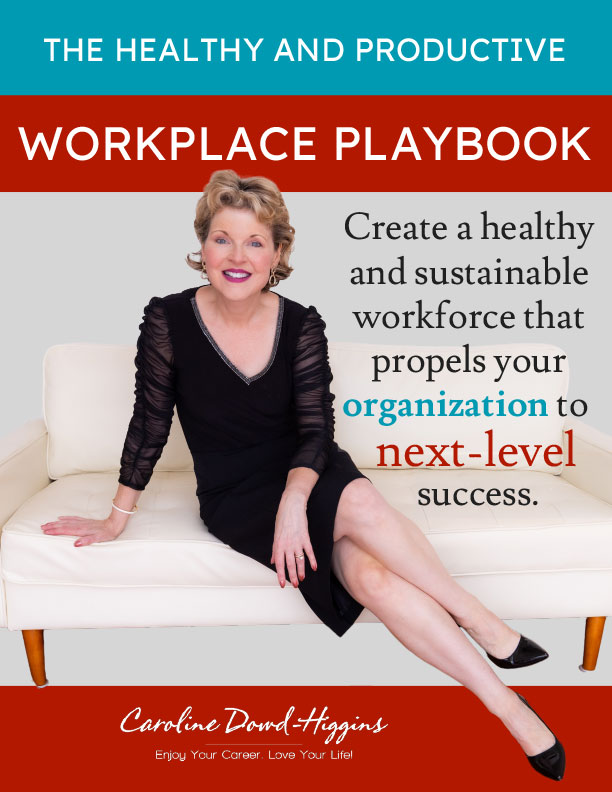The Worker Experience Drives Company Success

The latest Gallup results indicate that employee engagement is a dismal 33%, a disappointing increase of only 3 points over the past few years. Gallup found that disengaged employees cost the country somewhere between $450 and $550 billion each year. That’s not good business and it’s not sustainable.
I recently attended Appirio’s Worker Experience Tour in Chicago to learn more about how they defined and operationalized a virtuous cycle. Savvy companies know the customer wants a great experience. Because when the customer experience is done well, this leads to satisfaction, loyalty, and sales growth. But according to Appirio – this is only half the equation.
Appirio believes that the worker really matters.
“Happy workers. Happy customers. It’s a virtuous cycle, where success creates success.” By investing in the worker experience – the talent force in your company will be more energized, loyal, and engaged, which is ultimately good for the customer and the business. The virtuous cycle focuses on how to engage the customer and the worker simultaneously for an extraordinary next generation experience that integrates both entities for maximum engagement and productivity.” Harry West, SVP of HCM Transformation Services at Appirio
I learned a great deal about worker engagement from John Gorup, a Solution Architect at Appirio.
How Do Companies Compete?
John Gorup brought me back to the basics of how companies used to compete. While these elements are still important – they are not enough for a business to succeed.
- Price
- Product Competition
- Technology Innovation
- Marketing
He shared the key idea that a company must structure its communications to support its business strategy. The worker is at the heart of the communication of a company and the worker must now be considered an essential element in a company’s success.
John Gorup is passionate about the need to team build and connect as well as to provide recognition and shout-outs to engage and assure alignment and focus for a positive worker experience.
The 2020 Workplace
Future of Work expert, Cheryl Cran posits that successful workplaces in a few shorts years must be networked, flexible, integrated, open and innovative to compete for top talent and succeed. Cran believes the 2020 workplace will be built around employees.
Deloitte projects that workplaces will be digital and integrated. Workspaces will be more like hubs that allow people to select from a variety of locations. Looking beyond to 2025, Deloitte forecasts that 70% of leaders are likely to reject traditional business environments and opt to work independently through digital means.
The Flexible Work Environment
Today’s workforce, regardless of age, values flexibility and many prioritize this over salary when making a decision about a new career opportunity. Flexible work is not just a Gen Y or gig economy, contract worker pursuit. Talent of all ages and levels of the organizational chart want it!
Vodafone’s global survey revealed a rapid adoption of flexible work.
“75% of companies worldwide have now introduced flexible working policies to enable employees to vary their hours and use the latest technologies to work from home or on the move according to one of the largest global surveys of its kind conducted with 8,000 employers and employees across three continents. The survey – Flexible: friend or foe? – by Vodafone drew on responses from small and medium-sized businesses, public sector organizations and multinational corporations (MNCs) in 10 countries.” – Vodafone
Brick and Mortar vs. Work from Home
Remote.co makes a compelling argument for why employees prefer working from home that also benefits the company. Check out these points from Adrianne Bibby of Remote.co.
- Save Time and Money For Employees – Paying for commuting, lunchtime meals (especially eating out), and office-worthy clothing are all expenses that can be drastically reduced or eliminated for virtual workers.
- Cut Costs for Employers – Companies that switch to a distributed workforce model stand to reap huge gains, including savings on office maintenance, utilities and overhead, supplies, and other costs associated with traditional offices.
- Help the Environment – The more employees who don’t have to drive or take public transportation to a brick-and-mortar office, the greater the savings, and the greater the opportunity to use telecommuting and other flexible options to reduce the carbon footprint.
- Achieve Job Flexibility – Distributed employees often work on a ROWE (results-oriented work environment) basis, which means they can do their work from anywhere, at any time—as long as the work gets done, and deadlines are met.
- Improve Work-Life Balance -Virtual workers often enjoy greater latitude in setting their own schedules than workers in traditional offices. That could mean greater ability to be available for family events, and an easier time stepping away from work duties in the event of a family emergency.
- Global Recruiting Pools – Employers who make the switch from brick and mortar to a remote office have the potential to hire the best candidates not just locally, but globally. Jobs that are truly virtual can be done from anywhere, which means companies don’t have to limit their talent searches to confined geographic areas.
- Enhanced Company Reputation – Increasingly, employers who can offer work flexibility as an option stand to benefit from good street credibility in the job marketplace. Job seekers who are in the market for flexible work are more likely to target their searches to companies that have great reputations for offering workplace flexibility.
What about Yahoo and Marissa Mayer?
One of Marissa Mayer’s first acts as CEO of Yahoo in 2013 was to ban working from home or telecommuting. She believed that in-office connectivity and camaraderie led to innovation and great sharing of ideas that could not happen from home. She succumbed to fears that “telework” was ineffective and routinely abused by workers who were less productive and efficient unsupervised in a virtual environment.
While Mayer’s fears seemed understandable at the time, Appirio’s John Gorup believes there are easy solutions.
Hire people you can trust to work remotely to be at the top of their game in this environment. Invest in other culture building activities by using some of the money you saved on real estate and office space. Provide state of the art IT for improved communication. Create a leadership pipeline that grooms and coaches talent on all levels to thrive in a flexible environment.
The onus is on the leaders of a company to create a place, even if virtual, where the talent can do its very best work. A compelling company culture isn’t about the free snacks or ping-pong tables in staff lounges. Cultures that create a sense of purpose and meaningful impact for the worker and the customer are an investment in the people and the business.
It’s Good for Your Health and Wellness
Evidence is mounting that flexible workers make for happier workers—which leads to a whopping decrease in stress levels. Workers who aren’t torn between deciding what’s best for their careers versus what’s best for their personal lives tend to make for more focused employees.
One Size Doesn’t Fit All
Each business has a different talent force and mechanism to interface with the customer so the decision to go virtual and/or flexible is not an all-or-nothing choice. Having flexibility to make wise choices empowers the worker, the customer, and the company.
According to the Vodafone’s survey – Flexible: friend or foe?
- Of the businesses that have already adopted flexible working:
- 83% have reported improvements in productivity.
- 61% have reported increased profitability
- 58% have reported a positive shift in their company’s reputation
As more organizations learn why engagement is so low and address the technology, transparency, and communication issues in the workplace, the ratings will slowly move up. In Appirio’s experience, and in recent Forrester data they commissioned, business leaders clearly recognize the connection between worker experience and customer satisfaction, but they aren’t sure how to address the situation. Close to 90 percent of respondents in the survey believe worker experiences affect the customer experience but nearly all fail. There is hope and a specific strategy for success.
The Forrester data report: The Worker Shapes The Customers’ Experience has key recommendations for business leaders.
- Listen and learn what workers need.
- Align the worker experience with the customer experience.
- Provide a worker toolkit that matches their customer experience needs.
- Measure the effectiveness of their worker experience efforts
A worldwide shortage of skilled college educated workers of more than 38 million is predicted by 2020 according to Inc.com. Will your business be nimble and able to adapt to the future of work? Considering the worker experience is essential.






